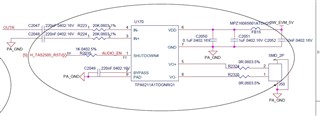Other Parts Discussed in Thread: TAS2505
Hi team,
My customer use TPA6211 in cluster, and they meet one issue, Vo+ will get one around 2V pulse at the moment of power-up, and the SHUTDOWN pin is low. So could you kindly tell me why this happen and how to avoid this? Thanks for your help.


B.R
Jiawei

